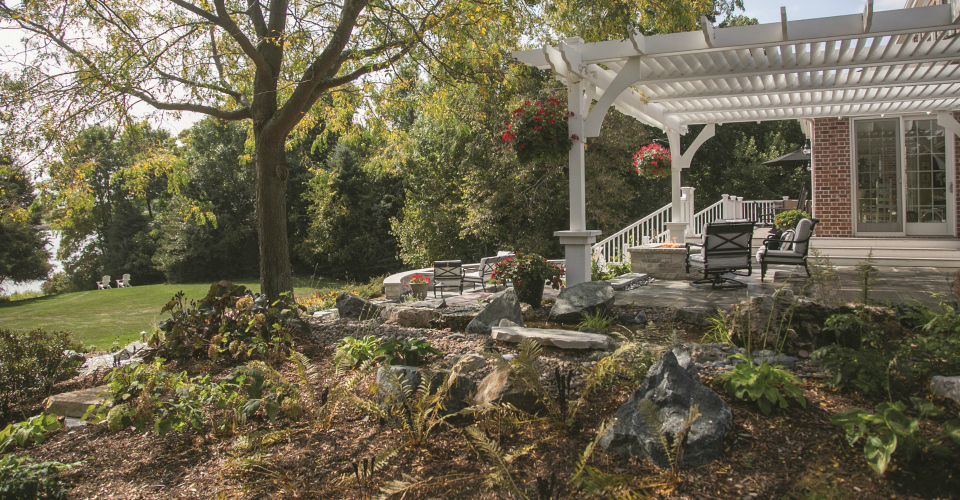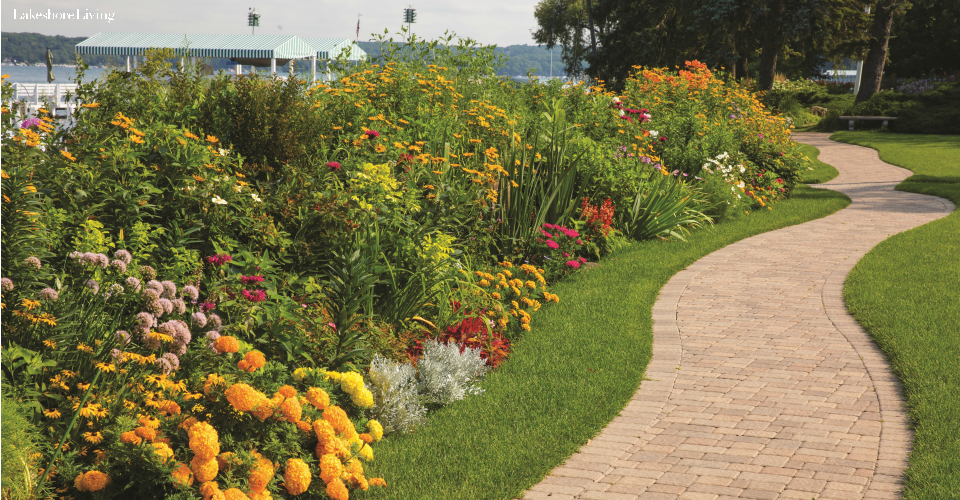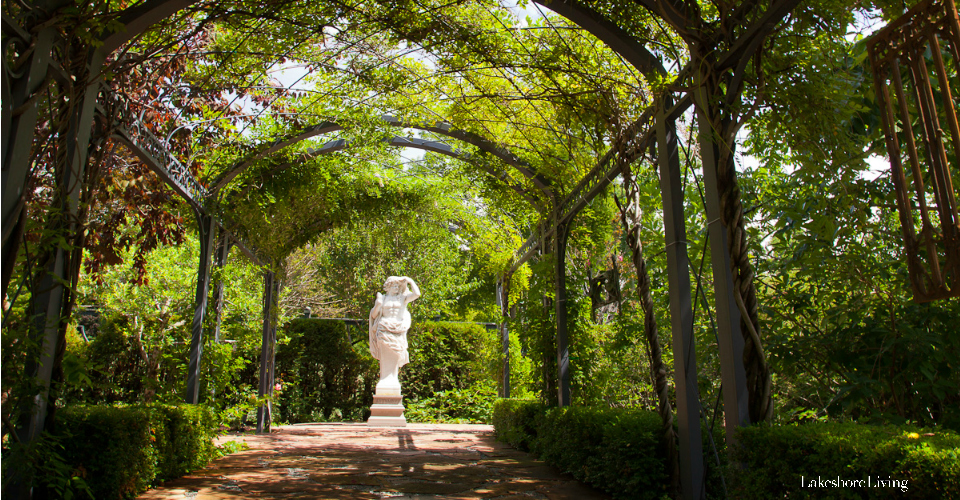By Shayna Mace
Although it’s hard to see the lush greens of spring and summer in your lawn and garden slowly fade away in the fall and winter, there are ways to not only prep your landscape for cooler temperatures, but extend its hardiness and longevity for next year’s spring and summer. We talked to a few landscape experts who gave us tips on what to do.
GORGEOUS GRASS
Since it takes up so much real estate in the front, sides and back of your home, it’s worth keeping your lawn in tip-top shape not only for an eye-pleasing look, but for the health of all of your plantings, maintaining a soft surface for play for kids and grandkids, and even the well-being of our lakes.
“If you have a thick, healthy lawn that’s the best defense against broad leaf weeds and diseases. So, doing a regular program using a slow-release, granular fertilizer that meters out over time will help your lawn thrive. Going into the fall and winter it’ll offer your lawn better survivability, more disease resistance and it will come out of dormancy sooner and much stronger,” says Lee Schroedl, account manager and certified arborist with Bret Achtenhagen’s Seasonal Services. “Some people underestimate the value of this application [but] it sets up your lawn for success.”
A slow-release fertilizer will time out over four to six weeks for effective nutrient distribution. Schroedl recommends looking for a nitrogen-based formula that has some potassium in it (it’s the third number on the label in the nitrogen-phosphorous-potassium breakdown). Schroedl says an optimal time for an application is October or November.
AERATION BASICS
Besides fertilizing, aerate your lawn once in fall (between September and November) with a professional aerator rented from a hardware store, says Wayne Golz, lawn and plant care manager with Olson Toon Landscaping. Make sure the grass is moist and avoid aerating when it’s hot or dry as that can do damage. Golz says pulling out as many lawn plugs as you can with the aerator is a good thing: “You can’t over-aerate—you want to pull out as many lawn plugs as you can.” Schroedl says aerating in two directions is even better.
While aerating, it’s prime time to even throw out grass seed in thinning lawn areas, says Golz. Make sure to use the right formula depending on if the grass is in the sun or shade. Another important note: Schroedl recommends that homeowners should mark any obstacles in their lawn, like irrigation system sprinklers or invisible dog fences, as those can be nicked with a heavy-duty aerator.
POTENTIAL PRUNING
Now’s a good time to cut back perennials like day lilies and hostas, says Golz. Homeowners can also do renewal pruning in the fall, to make room for new growth on plants next year. Schroedl agrees, but cautions that people need to be knowledgeable about what plants they prune to avoid winter die-back.
“If you have day lilies and hostas it’s easier to cut those down in the fall because sometimes in spring it’s more of a mess as they decompose [over the winter]. You do not want to severely cut some plants down like blooming shrubs [such as] lilac forsythia, because you will cut off the flower buds for the following spring,” says Schroedl. “So, it’s being cognizant of what plant species you’re dealing with and … working with your local landscape contractor or call an arborist to help you identify your materials and timelines on what plants to prune.”
Golz says caring for and pruning your evergreens in the fall is another good move—but don’t trim them too late in the season: “You don’t want to trim those too close to December as they need time to heal themselves after you trim. You also want to give them a lot of water in the fall. All of that moisture they take in late in the season is what keeps them green—so as the cold air hits them they won’t turn brown.”
PRETTY PLANTINGS
Keep the color and interest in your yard going even in the fall by planting kale, pansies, mums, ornamental grasses and permanent items, like trees and shrubs, say the experts. Splitting perennials is another proactive way to fill in your landscape and save money on buying new plant materials. Or, start planning for next year’s bounty of blooms, says Schroedl.
“Fall is the time for bulbs—people underestimate the power of spring color. From October through November is the best time frame. We plant tulips, crocuses and hyacinths. Fall is the time to order in bulbs and think about where you want to add a splash of color in the springtime and extend your landscaping season several months. You can also look at mixing varietals that bloom early and late to extend your color time frame,” says Schroedl.





